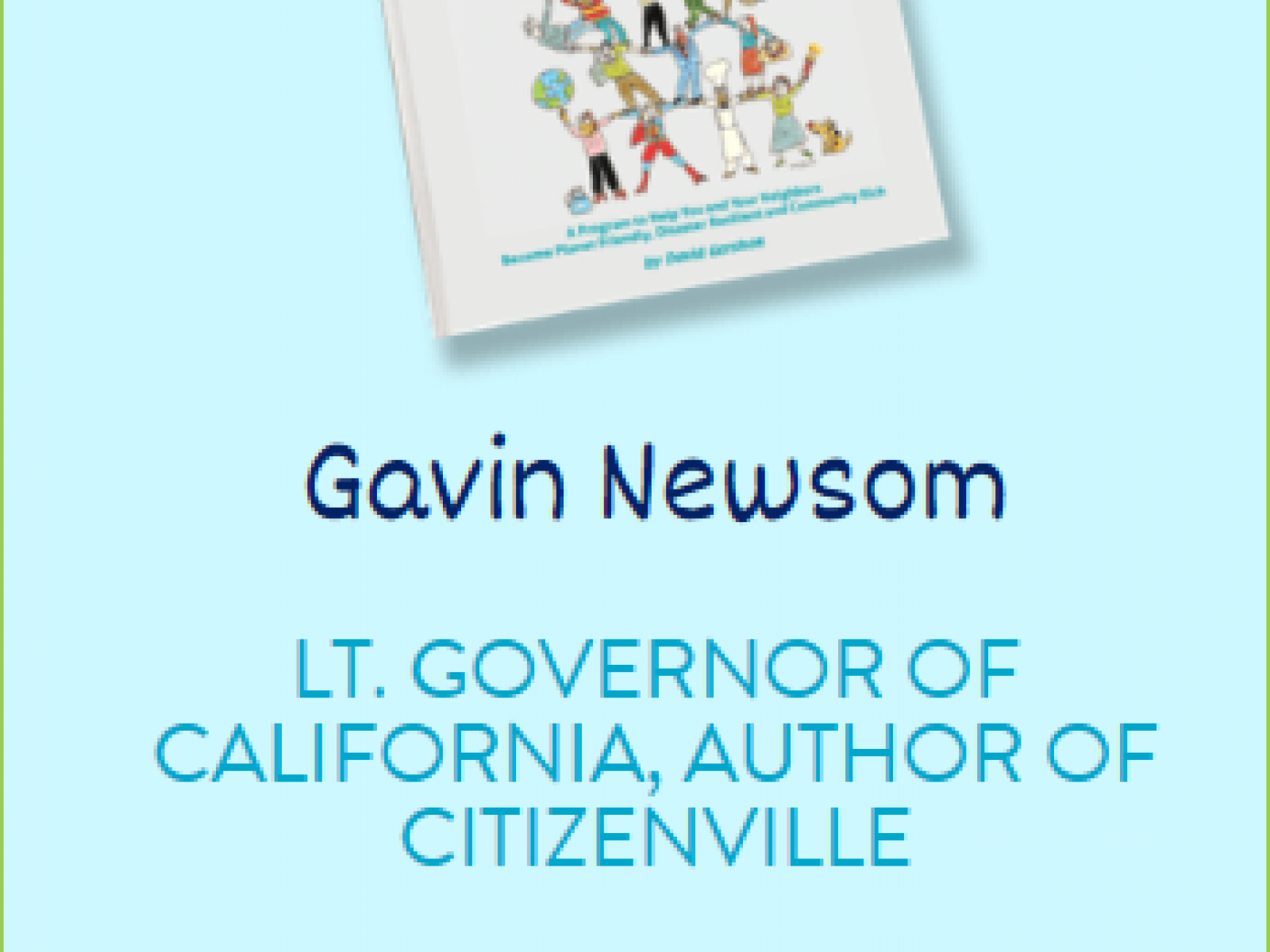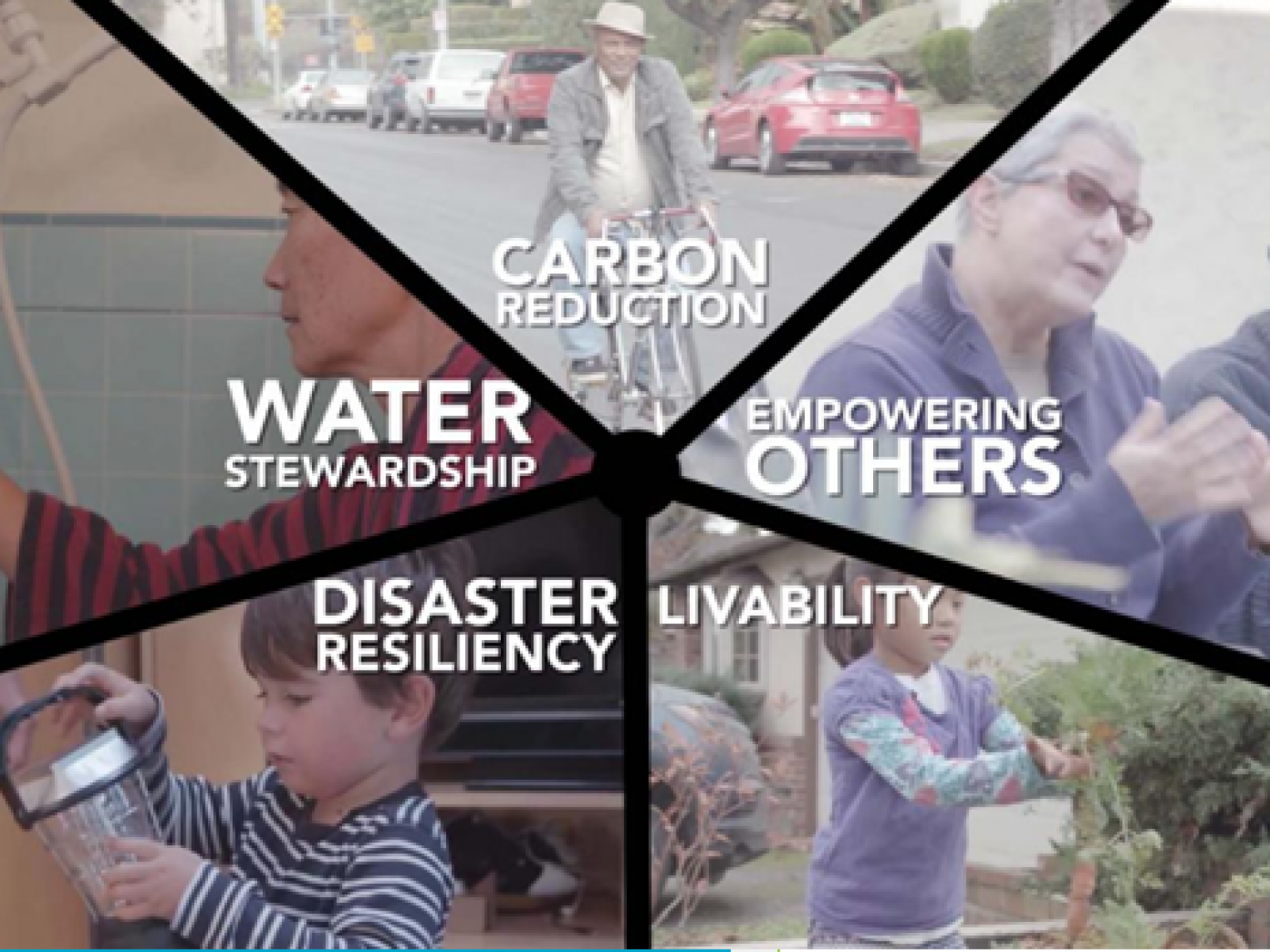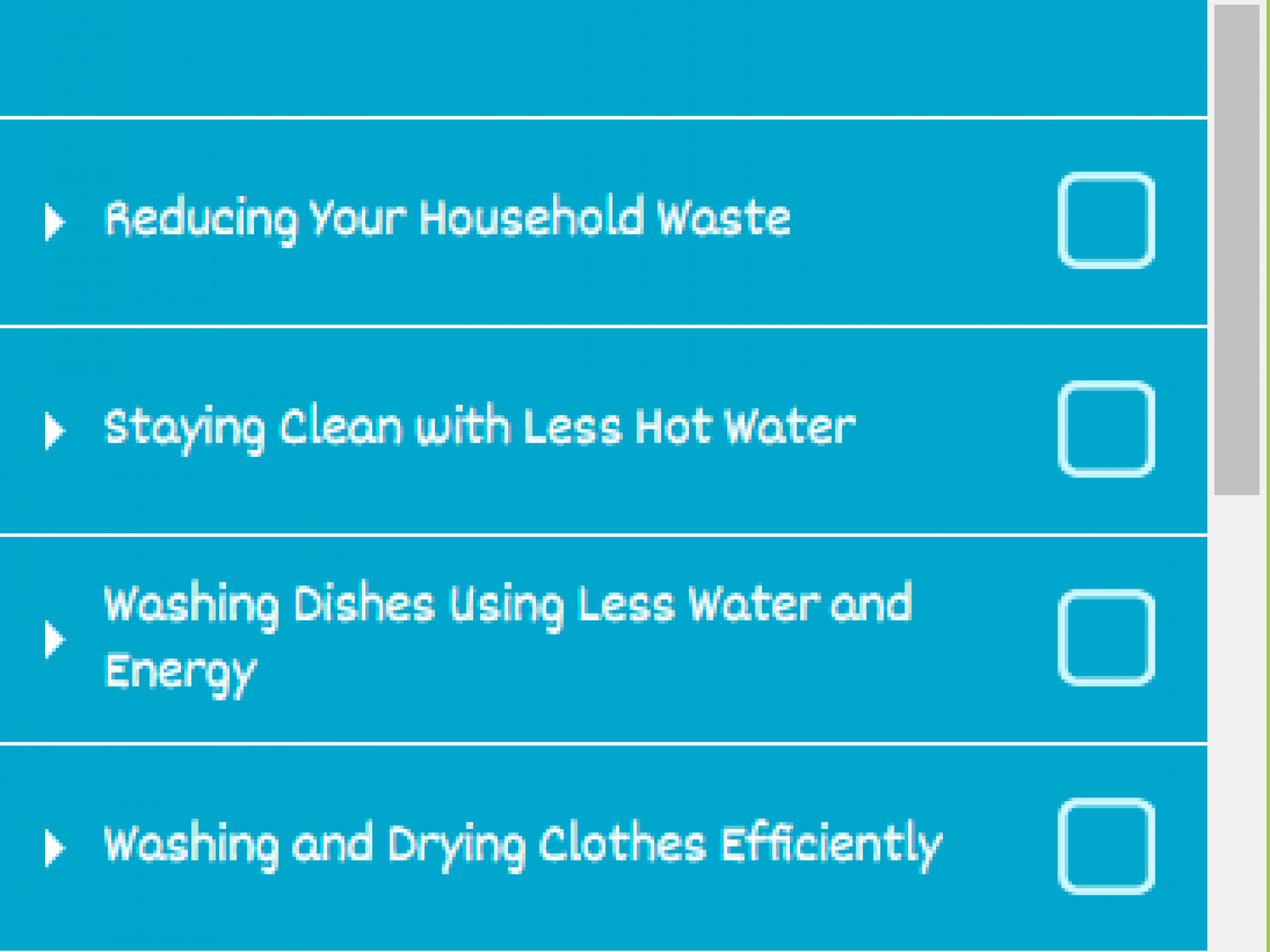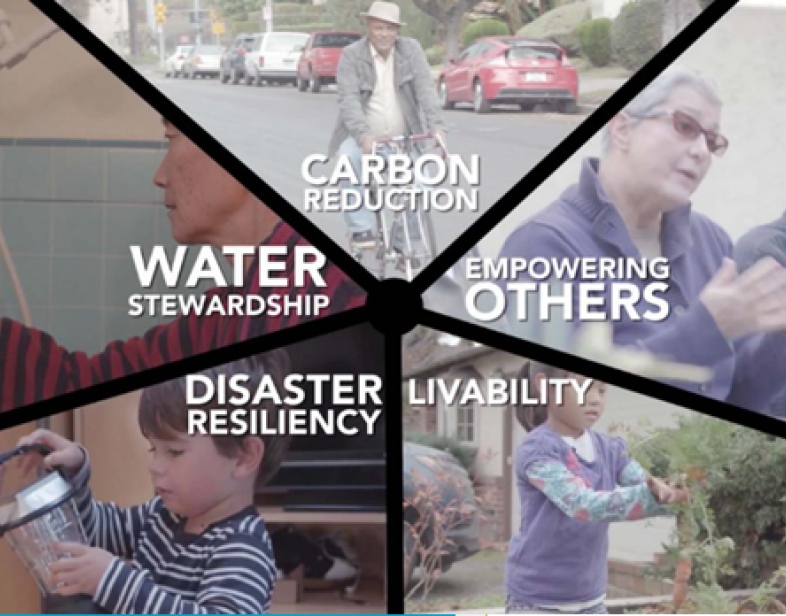An Overview Of Our Solution
Cities generate 70% of the planet’s carbon emissions and citizens generate 70% of those emissions through our daily lifestyle choices. If we can empower cities and their citizens to reduce their carbon footprint and enter onto a path of becoming carbon neutral we can both change the game around our warming planet and embolden humanity with agency for its future.
The purpose of the Cool City Challenge is to seize this opportunity by bringing to scale its proven behavior change and community engagement methodology, The Cool Block. This program is based on 30 years of social change research in over 200 cities. The Cool Block has been successfully piloted in Los Angeles, Palo Alto and San Francisco achieving an average carbon footprint reduction of 32% per household with 25 new behaviors adopted. It will be brought to scale in California cities then worldwide
- Population Impacted: Millions of people
- Continent: North America
Last name
Organization type
Context Analysis
Even though more than 100 local climate action plans have been developed in cities in California alone, these action plans tend to focus on high-level targets with no methodology for structured implementation, measurement or verification. Moreover, state and local approaches focus on technology-based solutions and policy adoption but generally lack strategies that include human and social factors that can either drive or hinder technology and policy adoption.
This is a systems problem spanning multiple issues and perspectives: people’s attitudes and behaviors, how people view and use energy, technology choices and cost considerations, existing policies and incentives, market acceptance, and larger social contexts such as norms and values. Traditional approaches to climate change mitigation that focus on technology, policy, and markets often neglect or underestimate the human and social factors that interact with policy acceptance, technology adoption and market development.
Describe the technical solution you wanted the target audience to adopt
The Cool Block is designed to work bottom up by empowering citizens to reduce their carbon footprint, create disaster resilient blocks & livable neighborhoods through participation in a structured behavior change program with a peer support group of neighbors. Our behavior change methodology is based on three decades of rigorous research and social learning that has demonstrated how a peer support system combined with recipe style actions set in the context of a structured program and compelling community vision, move citizens to take action.
A web-based support system helps households take action with the help of local resources. It helps them track their collective progress so they are inspired to sustain their commitment.
“I really liked that there were step-by-step, clearly stated action recipes for the program. That helped a lot in figuring out what to do, what would make the most difference, set priorities, and do it.” Shannon Wells – San Francisco Cool Block participant.
Type of intervention
Describe your behavioral intervention
The program consists of five topic areas (carbon reduction, disaster resiliency, water stewardship, neighborhood livability and empowering others) covered in bi-weekly meetings led by different neighbors living on a block or within a multi-family building. Participants select from a menu of action recipes. Some actions are done as individuals, and others are carried out by the team of neighbors that forms on the block. Behavior change is achieved through a combination of the action recipes, a peer support system and self-directed meeting scripts supported by a trained volunteer coach.
The Cool Block taps the intrinsic motivators of meaning, community and agency to engage people. The desire to connect with one’s neighbors in a meaningful way is the secret sauce of Cool Blocks. Once neighbors become a peer support group, it creates the motivation and the social norm to adopt and sustain new behaviors.
“What I saw was that people are hungry for community and that’s what the Cool Block offers. But it is so much more. We helped each other go through lowering our carbon footprints as individuals and as a group. And once we learned we’d need each other in an emergency, we prepared our block by stocking food and sharing information about who has a generator, tools, things needed to survive. It’s been a year but we don’t want to stop. The benefits have been far more than we ever expected.” – Lorrie Castellano, Palo Alto Cool Block Leader and Coach.
As needed, please explain the type of intervention in more detail
N/A
Describe your implementation
The Cool Block program include specific guidance on how to create a Cool Block, how to lead each meeting through a shared leadership model, how to take action in each topic area & how to transform a disparate group of neighbors into a high-performing team.
A web-based support system helps households plan & take action. It helps them track their collective progress so they are inspired to sustain their commitment. Through this feedback loop, citizens can see their direct impact & spread their social impact across their neighborhood, their city & beyond. This is a map of The Cool Block program’s different roles, component parts & interrelationships. Each contributes to the delivery of behavior change, community engagement and scalability.
• Cool Block: both sides of the street up to the corners, cul-de-sac, apartment building (vertical block), or condominium.
• Cool Block Leader: a person who commits to start and manage a team of five to eight households on the block.
• Cool Household: a program participant who participates in a block-based team.
• Cool Block Coach a person who has been through The Cool Block program and coaches new Cool block leaders.
• Cool City Partner: A community-based nonprofit organization, faith-based group, school, government agency, or business that helps recruit Cool Block Leaders.
• Cool Resource: A city agency, non-profit or business offering local resources and services to help households and blocks achieve their goals.
• Cool City: A city that conducts The Cool Block program to further its carbon reduction, water stewardship, disaster resiliency, and livability goals.
• Cool City Program Manager: A person who manages The Cool Block program in their city.
• Cool City Challenge: A learning community of cities using The Cool Block program who commit over a three-year period to engaging a minimum of 25% of their blocks with participating households reducing their carbon footprints by at least 25% & becoming disaster resilient.
External connections
We formed a 3-way partnership between our non-profit, the three cities of Los Angeles, San Francisco & Palo Alto, & LA-based natural cosmetics company, Josie Maran Cosmetics. The goal of this private-public-civic partnership was to create synergy between each entity’s core assets – empowerment expertise, community credibility & financial resources.
For Josie Maran Cosmetics it was an opportunity for CEO Josie Maran to further what she calls corporate social engagement – the shift from minimizing harm to maximizing good.
From a city’s point of view this partnership model provides them with two assets essential to meeting their climate action plan goals – behavior change expertise to address the climate impact of their residents and the financial resources to implement a bottom-up solution. It optimized the city’s climate performance capacity through creation of a whole system solution. The Cool Block creates bottom-up change from the demand-side (consumers and voters) which in turn activates top-down change from the supply-side (policy change and technology adoption).
James Keene, Palo Alto City Manager describes why he is excited by his city’s participation in The Cool Block: “The Cool Block links the climate change challenge facing our planet to the intimate, personal, social scale of the city block. It starts and ends with the premise & promise – that the individual, households & neighbors are the way forward in the face of seemingly insoluble global problems.”
Who adopted the desired behaviors and to what degree?
Los Angeles, San Francisco and Palo Alto piloted this program on 45 blocks. Each city experienced The Cool Block program successfully addressing two massive unmet societal needs: a scalable solution to address climate change and overcoming the social isolation people feel living in our urban-centric world.
The pilot demonstrated that The Cool Block methodology enables substantive behavior change & participation on a block. The program achieved an average household carbon reduction of 32% with 25 Cool Block actions taken. Fifty-five percent of the people on the block approached by their neighbor agreed to participate in the program.
Stanford University research found that, “The program increased average scores for each of the program performance indicators by an amount that was both substantively and statistically significant. Two of the most notable changes were a nearly 40%increases in a block’s commitment to reducing its carbon footprint as well as sharing tools and resources.”
How did you impact natural resource use and greenhouse gas emissions?
The program achieved an average household carbon reduction of 32% that came to approximately 7 tons per household. The most popular carbon-reducing actions were reducing waste, using less hot water in personal and kitchen use, efficient lighting, moving toward a vegetarian diet, ensuring an efficient car, and switching to 100% renewable energy. In addition, 25% of the reporting households did household energy retrofits.
This was self-reported data collected via our website using an EPA-based carbon calculator to create a baseline with pounds of carbon reduction assigned to each of the actions taken.
Further, households took actions to conserve water, reduce their non-point source water pollution and reduced their overall consumption of natural resources through engaging in block-based resource sharing and becoming more thoughtful in their purchases through the action: “Think Before You Buy.” This action helps people meet their non-material needs non-materially.
What were some of the resulting co-benefits?
The primary co-benefit was the generation of social capital and connectivity.
“I learned that my neighbors are more like me than I thought. We share a lot of the same goals for our community, and these cross cultural and ethnic lines. We helped rewrite the social blueprint of our neighborhood. We showed how to be a community which makes it easier for others to do the same.” – Shannon Wells, San Francisco Cool Block participant
“The program surpassed my expectations on every level. I had more people eager to join than I could ever have anticipated. The group that we have formed has supported each other to reduce carbon and energy, shared ideas for water reduction and provided helpful support for disaster preparedness. More than anything, we’ve built lasting relationships between neighbors who may have never otherwise met each other. Our team is proving that the most powerful engine of change may indeed reside right here in our neighborhoods.” – Victoria Thorp, Palo Alto Block Leader.
Sustainability
Empowerment Institute provides matching grants to cities that wish to partner. See key partners above for details of this private/public/civic partnership model. Because this is a whole system solution, cities draw on various departments to meet their match including: solid waste, water, transportation, fire, police and neighborhood services. Further, county and other regional partners who benefit from the program’s various behavioral changes provide funding. In the scaling phase we anticipate the state will be a major funder as well as other businesses.
Return on investment
Supported by our funding partner, The Cool Block has made one-time investments of $500,000 to develop a mobile-first software platform designed to support implementation at scale. It has provided another $500,000 to evolve this platform over three pilot phases.
Based on the results achieved, cities are now partnering. To help them better understand the full ROI on this comprehensive demand side management intervention, we have contracted Lawrence Berkeley National Laboratory to develop a cost/benefit framework. It will show Cool Block’s benefits on a city’s infrastructure and energy service delivery based on reductions in residential energy consumption, transportation fuel, and reductions in water consumption and solid waste.
How could we successfully replicate this solution elsewhere?
The next phase of The Cool Block is to prepare it for scaling through a strategy called the Cool City Challenge first in five California cities, then across California, America & the world.
The goals of the Cool City Challenge are to engage a minimum of 25% of a city’s blocks over a three-year period to achieve a minimum carbon footprint reduction per household of 25% & create a disaster resilient block. Then with this carbon literate & socially connected citizenry, empower the city to embark on the journey of becoming a carbon neutral city by 2030. To that end we will be developing a Carbon Neutral City X Prize.
The annual budget over three years to get to 25% of the blocks (approximately 400 in a city or portion of a city of 70,000) is $300,000. After three years we will have built the capacity of the city to manage the program and continue the scaling process on its own. Over time economies of scale will emerge and communities of practice will evolve, reducing these costs.




